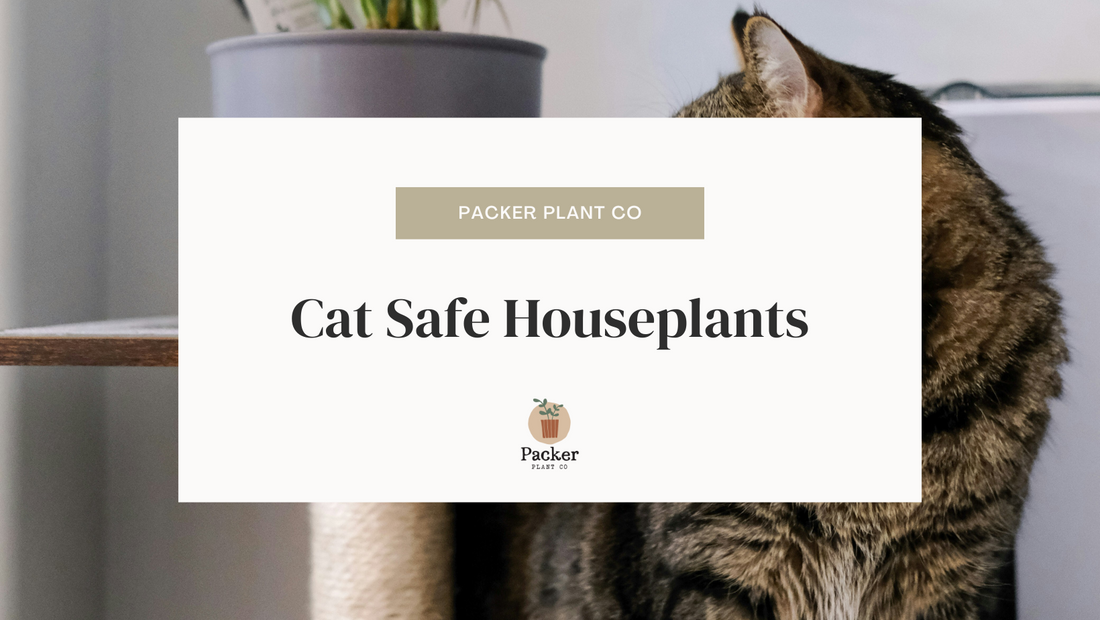Creating a Safe Haven: Cat-Safe Houseplants and How to Care for Them

Introduction:
If you're a proud cat owner like me, you know how important it is to create a safe environment for your furry friends. The good news is that you don't have to sacrifice your love for houseplants just because you have a curious kitty living at home! In this blog post, we will explore several cat-safe houseplants that not only bring beauty and freshness to your home but also ensure the safety of your beloved pets. So let's dive in and discover some beautiful cat safe plants!
1. Spider Plant (Chlorophytum comosum):
The Spider Plant is not only a beautiful addition to any room but is also known for its air-purifying properties. This resilient plant thrives in bright, indirect light and doesn't require frequent watering, making it perfect for busy cat owners. Plus, its dangling leaves provide endless entertainment for playful kitties.
2. Boston Fern (Nephrolepis exaltata):
The Boston Fern is an elegant houseplant that adds a touch of sophistication to any space. Not only is it non-toxic to cats, but it also helps improve indoor air quality by removing harmful pollutants from the surroundings. Place your fern in a spot with indirect sunlight and keep the soil consistently moist.
3. Areca Palm (Dypsis lutescens):
Looking to add a tropical vibe to your home? The Areca Palm is an excellent choice! This cat-friendly plant features graceful feathery fronds that instantly bring a sense of tranquility to any room. Ensure it receives bright, indirect light and water when the top inch of soil feels dry.
4. Friendship Plant (Pilea peperomioides):
The Friendship Plant, also known as the Chinese Money Plant or Pancake Plant, has become incredibly popular in recent years. Not only is it safe for cats, but it also has a unique appearance with its round, coin-shaped leaves. Place this plant in a well-lit spot away from direct sunlight and water it when the top inch of soil feels dry.
5. Calathea (Calathea spp.):
If you're looking for vibrant and eye-catching foliage, the Calathea is the perfect choice. With its stunning patterns and colors, this cat-safe plant will undoubtedly be a conversation starter in your home. Keep your Calathea in a warm and humid environment with indirect light to maintain its beauty.
Caring for Cat-Safe Houseplants:
Now that you have an array of cat-safe houseplants to choose from let's go over some general care tips to ensure their health and longevity:
1. Light: Most cat-friendly plants prefer bright, indirect light. Find a suitable spot near a window where they can receive adequate sunlight without being exposed to direct rays.
2. Watering: It's important to strike the right balance when watering your plants. Avoid overwatering, as this can lead to root rot, but also ensure that the soil doesn't become bone dry. Check the moisture level regularly by inserting your finger into the soil - if it feels slightly dry, it's time to water.
3. Soil: Use well-draining potting soil specifically formulated for indoor plants to prevent waterlogged roots. This will help maintain healthy growth and prevent common issues such as mold or fungus.
4. Pet-Proofing: While these plants are considered safe for cats, it's always wise to keep an eye on your furry friends' behavior around them. Some cats may still chew on leaves or dig in pots out of curiosity or playfulness.
Conclusion:
With these cat-safe houseplants and caring tips at your disposal, you can create a lush green haven in your home while ensuring the safety of your feline friends. Remember, plants not only enhance the aesthetic appeal of your space but also provide numerous health benefits for both you and your pets. So go ahead, embrace the joy of houseplants and let your plants and cats coexist harmoniously in a space filled with love, life, and greenery!

If you liked this blog post, make sure you're following us on social media for more!

